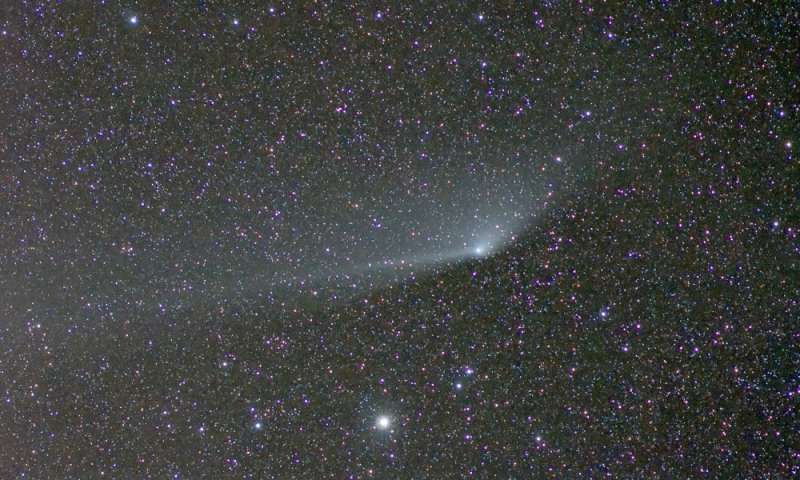Credit & Copyright: Marco Fulle
(INAF)
Explanation:
Once the famous
sunset comet,
PanSTARRS (C/2011 L4)
is now visible all night from much of the northern hemisphere,
bound for the outer solar system as it
climbs high above
the ecliptic plane.
Dimmer and fading, the comet's
broad dust tail
is still growing, though.
This widefield telescopic image
was taken against the starry
background of the constellation Cepheus on May 15.
It shows the
comet has developed an extensive
anti-tail,
dust trailing along the comet's orbit (to the left of the coma),
stretching more than 3 degrees across the frame.
Since the comet is just over 1.6
astronomical units from planet Earth,
that corresponds to a distance of over 12 million kilometers.
In late May Comet PanSTARRS
will pass within a few degrees of the north celestial pole.
1999 2000 2001 2002 2003 2004 2005 2006 2007 2008 2009 2010 2011 2012 2013 2014 2015 2016 2017 2018 2019 2020 2021 2022 2023 2024 2025 |
Январь Февраль Март Апрель Май Июнь Июль Август Сентябрь Октябрь Ноябрь Декабрь |
NASA Web Site Statements, Warnings, and Disclaimers
NASA Official: Jay Norris. Specific rights apply.
A service of: LHEA at NASA / GSFC
& Michigan Tech. U.
|
Публикации с ключевыми словами:
dust
Публикации со словами: dust | |
См. также:
Все публикации на ту же тему >> | |
Мнение читателя [1]
